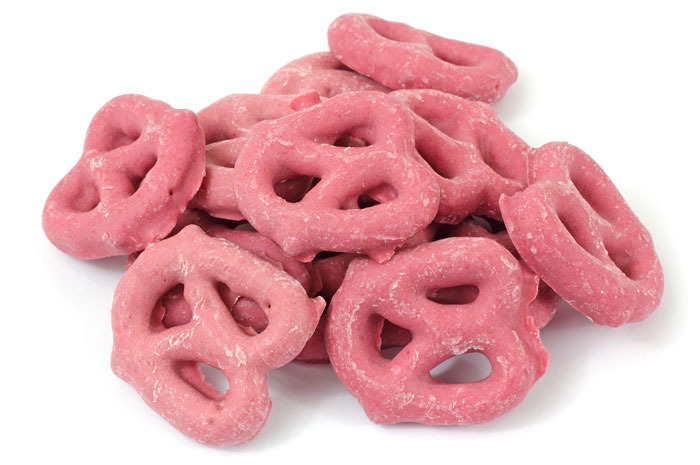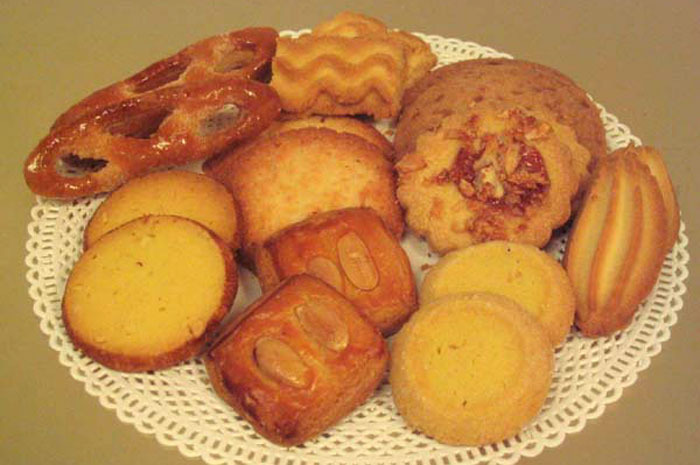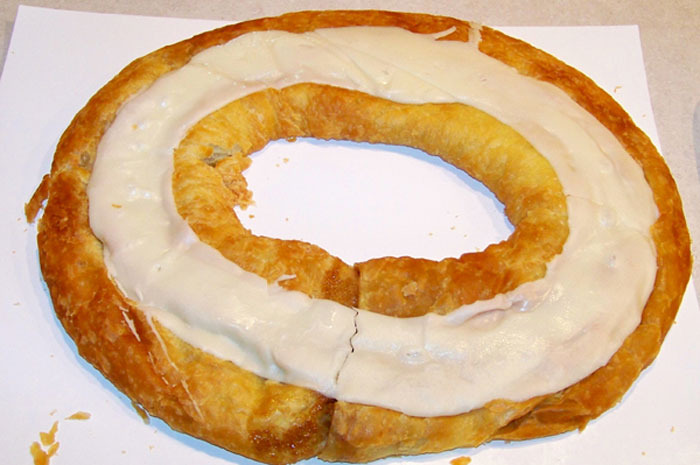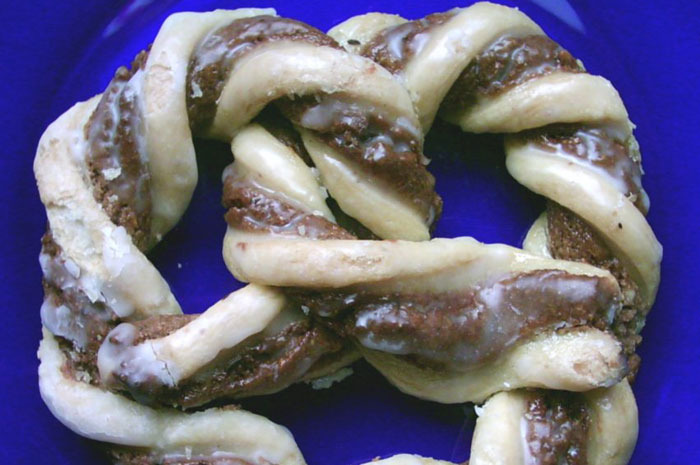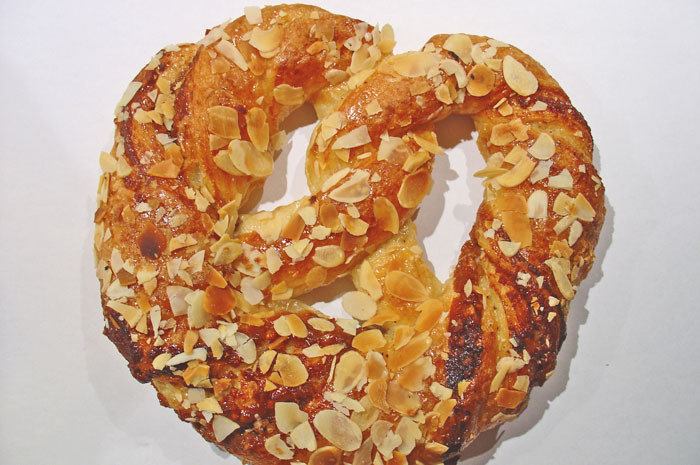Soft, Hard, Twisted, And Straight: 11 Pretzels Around The World
Soft, Hard, Twisted, and Straight: 11 Pretzels Around the World
Butterbrezel (Switzerland)
Butterbrezel sounds like pretty much what you'd expect it to be: a butter pretzel. It's a large, soft pretzel cut through the middle, so it looks like a sandwich, and it's filled with a generous portion of butter. Why eat a sandwich on pretzel bread when you can eat it in an actual pretzel?
Hard Pretzels (United States)
Though we can find both hard and soft pretzels in the United States, the kind of pretzels you can eat like chips are uniquely American, and have been since 1861, when they were first invented. In fact, the average American consumes about 1.5 pounds of pretzels per year, most (80 percent) of which are produced in Pennsylvania. They come in many flavors and coatings, such as yogurt or chocolate.
Kalach (Russia)
Kalach is a Russian bread shaped like a wheel and eaten during holidays. It is a symbol of luck, prosperity, and good fertility. Kalach is more like challah bread in texture, but its circular, twisted shape suggests a kinship with the pretzel.
Krakeling (Netherlands)
Krakeling is a pretzel-shaped cookie, the kind you might find in a large tin box of assorted tea cookies. It is often served at funerals alongside coffee or tea; in that context, the cookie symbolizes the beginning or end of life.
Kringle (Denmark)
A Danish kringle is the Nordic variation of a pretzel. Topped with a crown, its shape is the official symbol of Denmark's bakers' guild. It is often made with puff pastry, so it almost tastes like a croissant-pretzel hybrid (attention Dominique Ansel!). Popular fillings include marzipan and remonce (creamed butter and sugar). The Danish version is different from an American kringle, which is oval and topped with some sort of icing.
Nussbrezel (Germany)
A sweet pretzel with ribbons of marzipan running through it, the decadent Nussbrezel is sometimes compared to a doughnut because it may be coated in a sweet glaze. It looks a little like pretzel-shaped rugelach. It is often sold alongside puddingteilchen: a pretzel filled with custard or pudding.
Pretz (Japan)
Pretz is basically naked Pocky, except instead of a sweet coating, it comes with savory seasonings. It comes in different sizes, from kid's size to giant, and "double pretz" sticks come with two different flavors on each side of one single stick. Glico, the company that manufactures them, even has a variety of cheese-flavored pretz meant to be paired with wine.
Pretzel Cake/Luxembourg Pretzel (Luxembourg)
In Luxembourg, there is a popular tradition called "Pretzel Sunday," which takes place on the fourth weekend of Lent. Men are supposed to present their "valentines" (pretzel-tines) with large cakes shaped like pretzels, or large pretzels with generous sprinklings of sliced almonds and sugar. In return, on Easter Sunday, women give them a candy egg of the same size.
Twix Roll (United Kingdom)
Go to Auntie Anne's in the United Kingdom and you'll find most of the same things you'll find in the Auntie Anne's at your local mall, plus one incredible addition: a pretzel that has a Twix bar encased within it. This dessert is popular enough that it comes in a jumbo size.
Viipurinrinkeli (Finland)
Unlike the soft pretzels in Germany or the United States, the Finnish viipurinrinkeli don't come topped with seeds or large salt crystals: rather, it's infused with cardamom and nutmeg. The viipurinrinkeli is said to have originated at a Franciscan monastery in the Russian city of Vyborg, near the Finnish border.
Weisswurst Meal (Germany)
A Weissurst meal is not a kind of pretzel, but a pretzel — the traditional, large, soft Bavarian kind that is made using lye — is integral to this meal. It pears perfectly with sweet mustard and white sausage made from minced veal and pork back bacon. A Weissurst meal is meant to be enjoyed as a snack in between breakfast and lunch.
